Lessons Learned – by Pat Carson

East Brother Lighthouse
Almost weekly I make the voyage from various Delta marinas to locations around the Bay, and after passing by the Brothers more than a hundred times I decided to explore the East Brother Light Station Bed & Breakfast. Well, actually I did not look into it, Captain Leslie took the lead and in short order we had two other couples and ourselves lined up for a weekend stay.
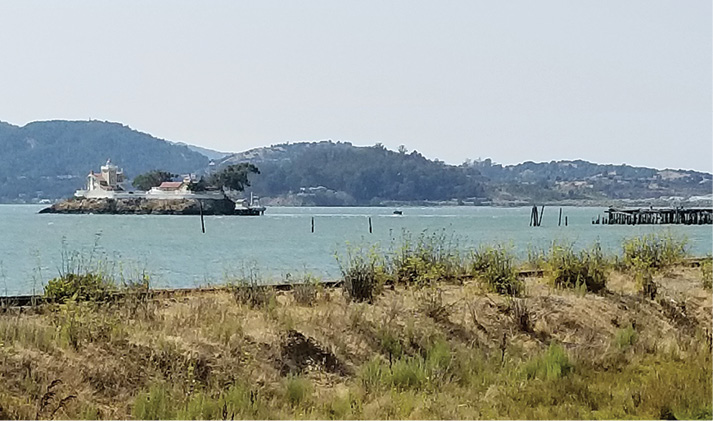
East Brother Lighthouse is located on East Brother Island just 1,000 feet west of Point San Pablo in Richmond, in the straits that separate San Francisco Bay and San Pablo Bay, and is accessible only by boat. The Lighthouse was designed by Paul J. Pelz who also designed her sister California light stations; Mare Island Light, Point Fermin Light, Point Hueneme Light, as well as Hereferd Inlet Light in New Jersey and Point Adams Light in Washington state.
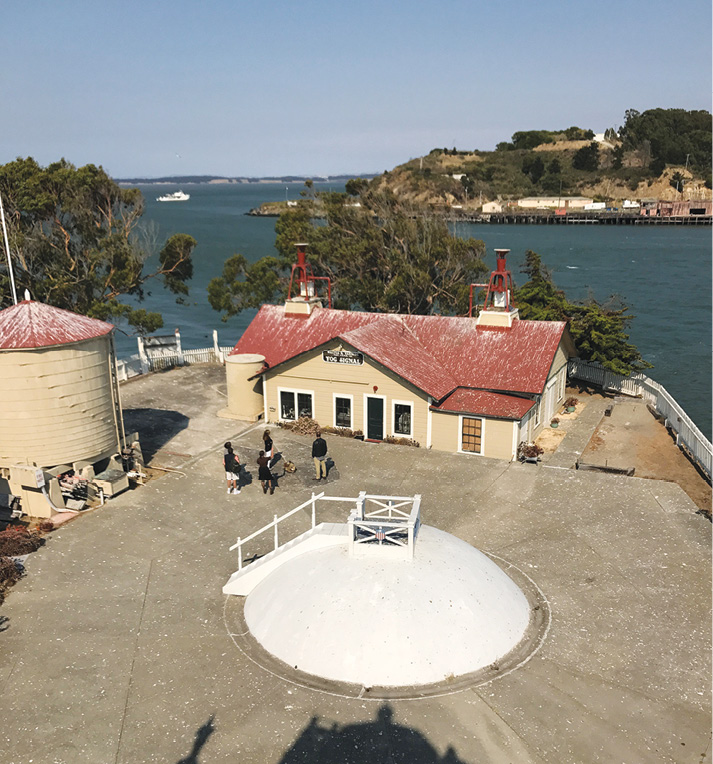
East Brother Light is the oldest wood framed lighthouse on the West Coast that is still fully operational and still in its historic configuration. Built in the early 1870’s the light was first activated on March 1, 1874. The United States Lighthouse Service operated the station until 1939 when the service merged with the United States Coast Guard. Large families occupied the island. They had to light the original lens wick, keep it filled with whale oil and maintain and operate the steam powered foghorn.
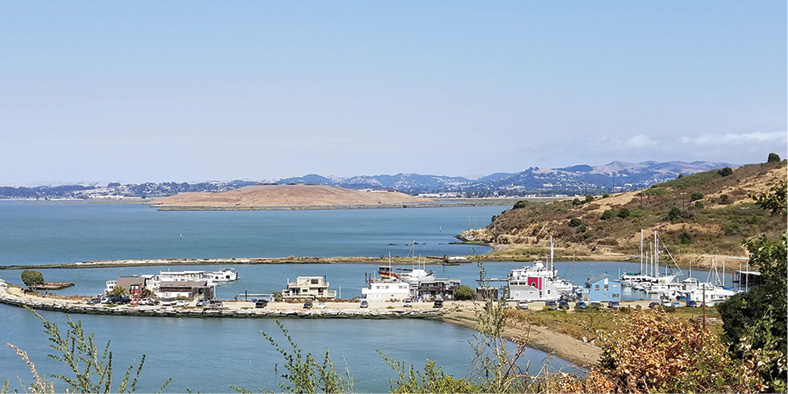
In the late 1960’s in a cost cutting effort the Coast Guard announced plans to demolish the station and replace it with an automated light tower. Fortunately, the Contra Costa Shoreline Parks Department launched an effort to save the historic site and in 1971 East Brother Light Station was placed on the National Register of Historic Places. However, neither the Coast Guard nor any other public agency had funds to maintain the buildings, so in 1979 a nonprofit group was formed to restore the structures and make the island accessible to the public. For nearly 10 years the lack of maintenance and neglect took its toll with rusting iron, rotting wood and peeling paint. With the help of government grants, private donations and volunteer labor, the light station was restored and in 1980 opened as a bed and breakfast with the proceeds used to maintain the three-quarter acres, two buildings and five structures.
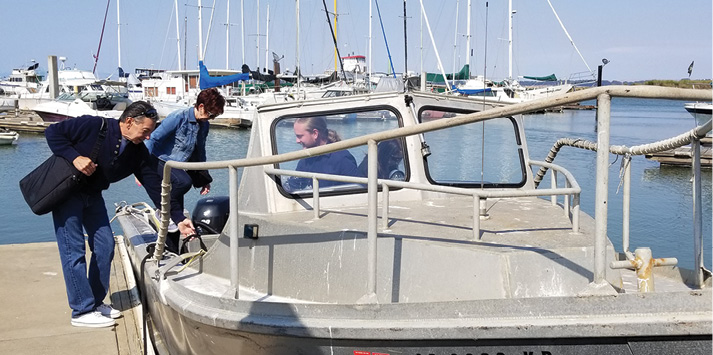
Getting There
Our overnight experience started Friday afternoon at 1600 with a boat ride from the Point San Pablo Yacht Harbor to the Island in a small aluminum six passenger skiff. The ride is quite short, no more than ten minutes around Point San Pablo and directly to the landing wharf. The most difficult part of getting on the island is climbing up the iron rung ladder with all your gear. Pack light, after all it is just an overnight!

Once you have climbed the ladder to the top of the wharf it is just a short walk up the stairs to the island. When on the island it is pretty obvious that when the U.S. government decided to build a light station on East Brother Island, they blasted off the top of the island leveling out a three-quarter acre area. The rock looks unnaturally flat.
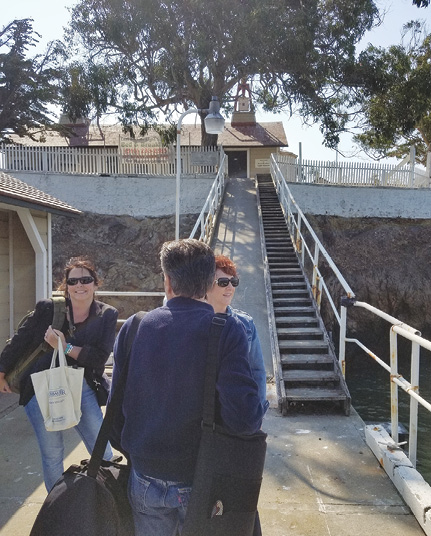
Our room for the night was the San Francisco Room which faces south and has a view of the San Francisco skyline, a private half-bath and adjoins the second-floor sitting room. Through the sitting room the narrow twisting stairs to the light tower are just a doorway away.
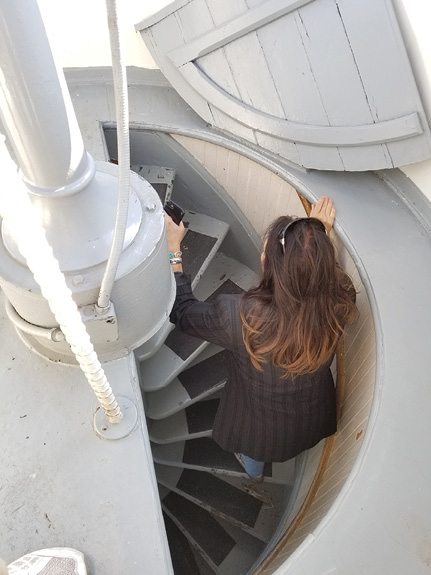
The bed and breakfast has four rooms available in the lighthouse building that are the original light station keepers’ quarters and one additional room in the fog signal room which was originally the radio room. The Marin room faces towards Marin County and Mount Tamalpais. It is located off the second-floor sitting room and is the only room that features a private full bath. The Two Sisters room faces towards San Pablo Bay, has views of the Sisters Islands and is the only room with a fireplace. The West Brother room faces west and has a view of the West Brother Island. The West Brother room shares a bathroom with the Two Sisters room. For a more unique experience try Walters Quarters which is located in the fog signal building, approximately 100 feet from the main lighthouse. In a separate building, Walters Quarters is more private, closer to the water and the furthest from the new foghorn. Views of San Francisco are to the south and east. Special note: shower and bath are for guests staying two nights as the sole supply of water is any rainwater captured in the station’s cistern located under the concrete surface between the lighthouse and the fog signal building. Once collected the water is then pumped into the storage tanks. The cistern only holds 50,000 gallons of water and when the rain stops that is all the water the island has until it rains again. The light station also maintains their own firefighting equipment and any water pumped into the storage tanks is used for that purpose.
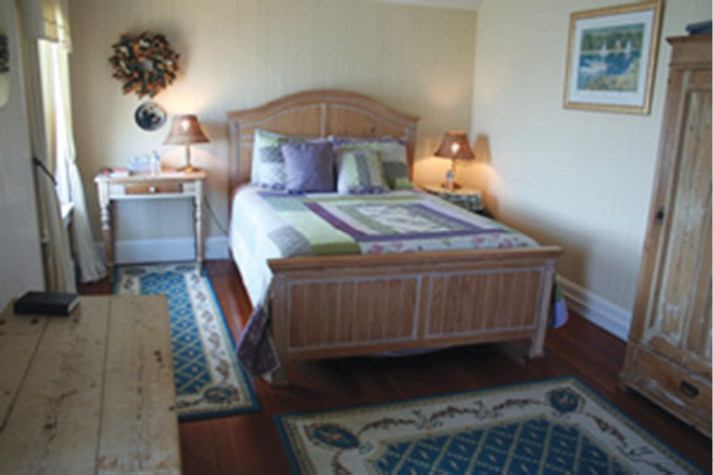
After you arrive and settle into your accommodation you have a few hours to enjoy the welcome champagne and hors d’oeuvres and to explore the light house and grounds before the four-course gourmet dinner with wine pairings is served. We visited in late August, and as is normal for San Francisco Bay it was quite breezy in the afternoon.
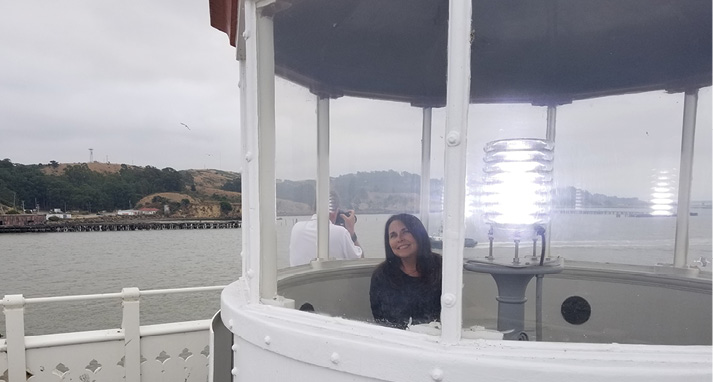
In 2012 a LED Marine Beacon was placed in the lantern room, replacing a revolving beacon that is now on display in the fog signal building. The LED beacon flashes white every five seconds and has a visibility of 14 miles.
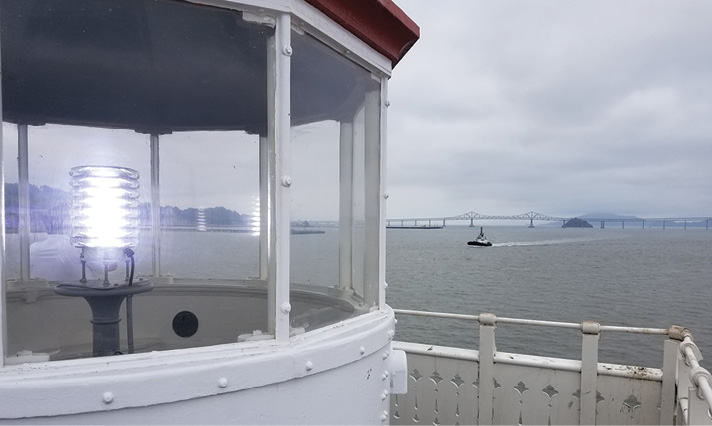
After brunch service on the second day, the guided tours and history lessons are with one of the very knowledgeable lighthouse keepers and usually end with a demonstration of the foghorn. For me this was the highlight of the tour as we had the opportunity to assist with starting the large diesel generator, powering on the air compressor and finally manually activating the historic 1922 two-tone base diaphone. The sounds echoing off the surrounding mainland hills are very satisfying. The modern foghorn is electric and not located in the foghorn building, but is remote at the southwest corner of the island and sounds every 20 seconds from Oct. 1 until Apr. 1. Not nearly as much fun as the original and I think that the noise from the birds that inhabit West Brother Island is louder than the electric horn. Also, on display in the foghorn building is a fourth order Fresnel lens, although not the one used at this light station, and the old revolving beacon that was retired in 2012.
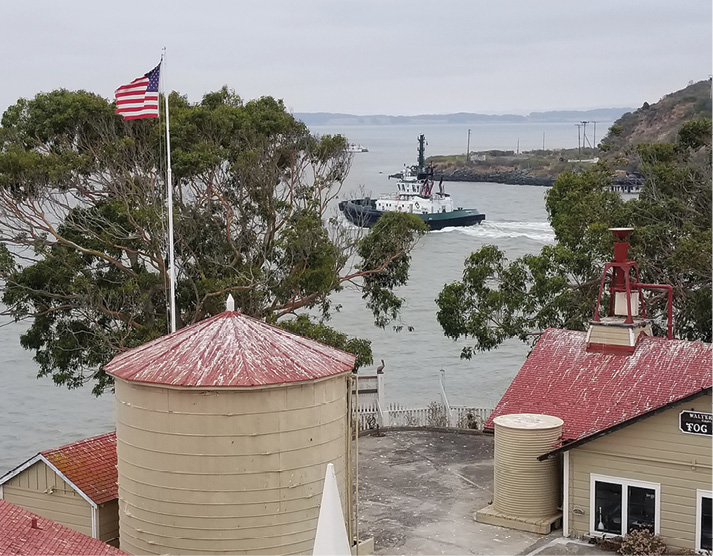
Interested in applying for the job of lighthouse keeper? The list of qualifications is long and they get dozens of qualified applications. The job is for a couple, one of whom must have a USCG commercial OUPV license for ferrying passengers to and from the island. They must also be a qualified hotelier operating a five-room inn and have high quality culinary experience serving gourmet dinners and breakfasts. The job only lasts for two years but the 16-hour workdays include history teacher, maintenance coordinator and shopkeeper in addition to being the boat captain, sommelier, and chef. The upside, non-visitor days, the keepers have the entire island to themselves. However, the maintenance, laundry and grocery shopping still must be done. Long days and hard work. A unique opportunity for unique couples thus the aforementioned limited two-year commitment.
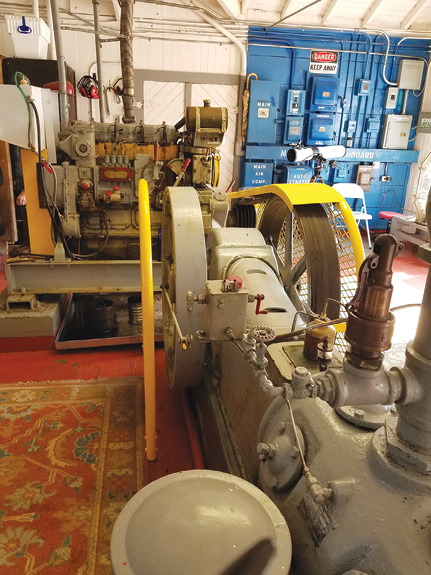
Our group had a great two days on the island and I enjoyed learning the history of a special aid to navigation that I use often. Every time I take the route east of the East Brother Island, I think about the views from the lighthouse tower and the relaxing weekend.
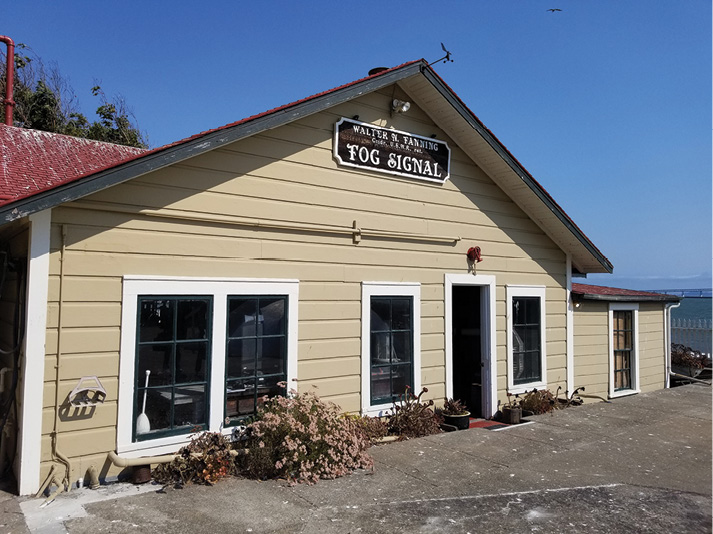
Lessons Learned
When you go, bring your own port and cigars, they have neither. Interested in making reservations for a day tour or a one or two night stay, navigate to their website at www.ebls.org. Unfortunately, due to the China Virus the island is closed, however they have hopes to reopen soon.
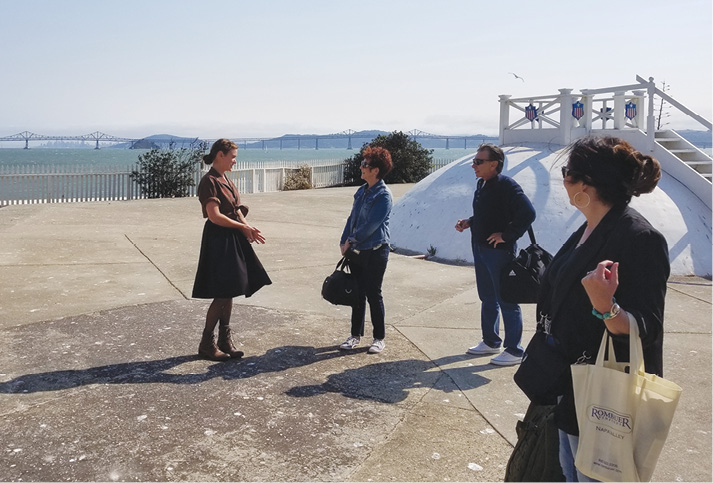
Lighthouses are expensive to run and maintenance is a never-ending task; volunteers are always needed. Do you have skills in diesel engine maintenance, plumbing, electrical or construction, then consider volunteering. Workdays are from 0900 to 1600 the second Saturday of each month. Do not have the time to volunteer, donations are appreciated.
Until next month please keep those letters coming. Winter is a great time of year for boating in the Delta and Bay. Have a good story to tell, send me an email. patcarson@yachtsmanmagazine.com. I love a good story.
NO. 951 LIGHT STATIONS OF CALIFORNIA (THEMATIC), EAST BROTHER LIGHT STATION
East Brother is the oldest wood-frame lighthouse on the West Coast still fully operational and still in its historic configuration with functioning equipment. It was one of a group of twelve lighthouses similar but unique in design, built in California during the early 1870’s. At the time it was built, it provided both a light and roof signal to guide boats ferrying mail, passengers and freight between San Francisco and various island ports.
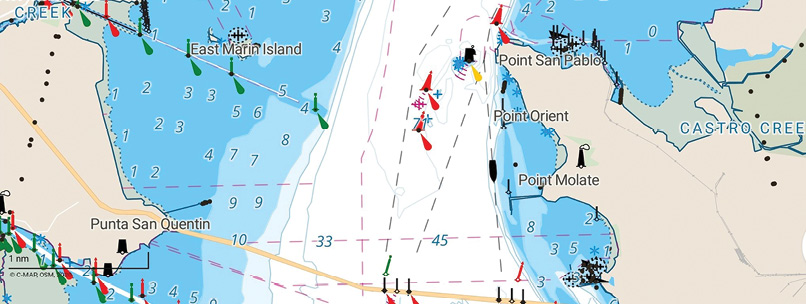
Other historic lighthouses on the West Coast:
Battery Point Lighthouse, Crescent City
Cape Blanco Lighthouse, Curry County, Oregon
Fort Point Lighthouse, San Francisco
Point Arena Light Station, Mendocino County
Point Bonita Light Station, Marin County
Point Cabrillo Light Station, Mendocino County
Point Montara Light Station, San Mateo County
Point Reyes Light Station, Marin County
Pigeon Point Lighthouse, San Mateo County
St. George Reef Light Station, Crescent City
Yerba Buena Island Lighthouse, San Francisco



